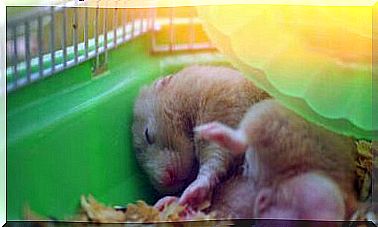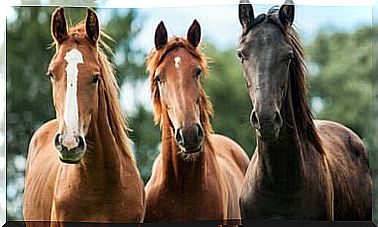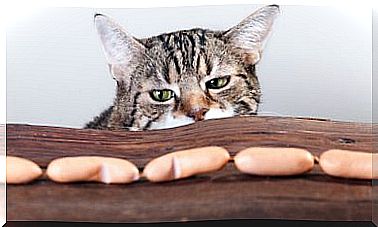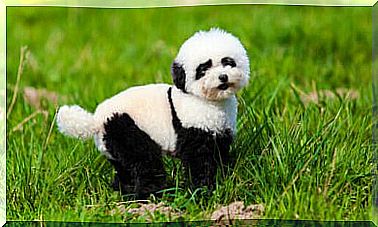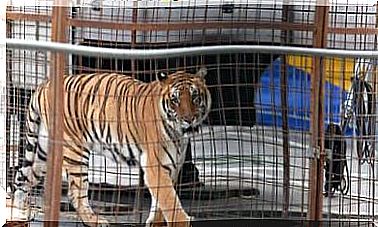Ladybugs: Learn More About Their Characteristics
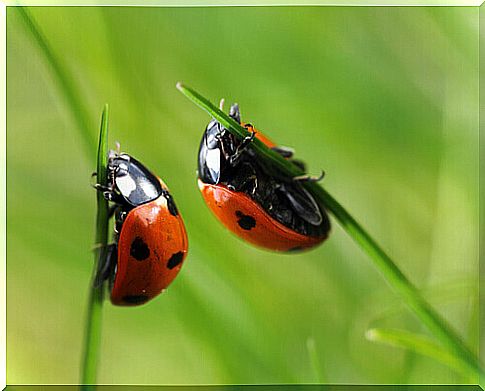
Ladybugs are some of the most beautiful and appreciated insects by farmers. When we think of a ladybug, we think of an insect with a black head and a red back with its characteristic black spots, although there are many varieties of colors and shapes. So let’s tell you all about them!
Characteristics
The ladybug is a coleopteran insect, that is, a beetle. It is closely related to other insects such as weevils, beetles and even fireflies.
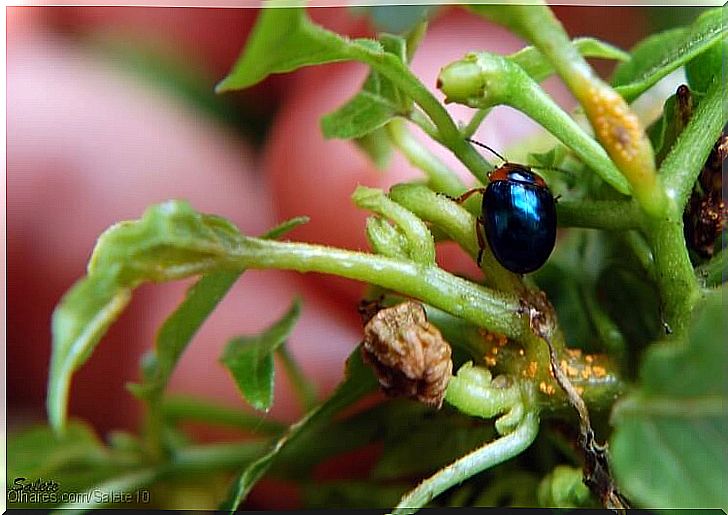
We usually think that ladybugs are red round insects with black spots. However, the reality is that there are many varieties: orange, yellowish, etc. There are also many different color patterns, although they are all black.
These insects are brightly colored to warn would-be predators that they are poisonous and have a very bad taste. In fact, ladybugs don’t have many predators. The biggest dangers they have to face are larger birds and insects. Swallows can also eat them, though they rarely do.
They are invertebrate insects, which means they have no bones. They can measure between 5 and 10 mm. They are diurnal animals, they use daylight to develop their activities . They hide at night and during winter they do something like hibernation . In early spring, they return to the countryside again.
Habitat
Ladybugs live in all corners of the planet and in the countryside they are easy to see because they don’t hide. In fact, they can usually be seen on top of plants and leaves.
The most important point for ladybugs to choose a plant to stay is the presence of aphids, their food. If there are aphids on a plant, the ladybugs will be on it or nearby.
The places where we can see the ladybugs are very varied. They can appear anywhere their prey are, in the field, in gardens and parks. They are attracted to brightly colored plants and large tracts of herbs or flowers. However, if the aphids in this area are wiped out, they will migrate to another location where they can find more.
Behavior
These cute beetles are very independent animals. In other words, they are solitary animals that spend the day looking for food.
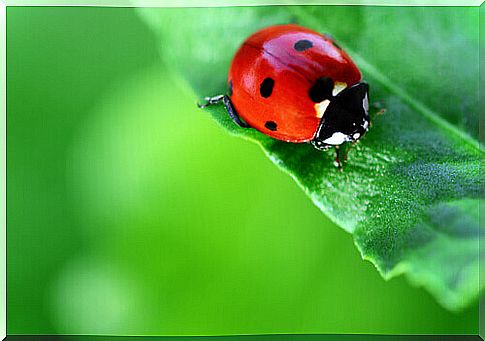
As for its reproduction, a single ladybird can lay more than 400 eggs, which usually hatch between March and April. It is common for them to leave their eggs on the leaves of plants with aphids, so that the larvae feed before they become adults. A ladybug’s complete cycle lasts two months. When winter comes, they go back to hibernate.
Even though they are independent animals, ladybugs come together to hibernate and protect themselves from the cold. Also, being all together when spring arrives, it is easier to mate and reproduce.
Longevity depends on each species of ladybug. We can say that they live on average a year, although there are some species that can live up to three years, the which is an achievement considering that insects are very small.
Ladybugs and their ecological importance
As ladybugs feed on aphids and not leaves and vegetables, they can be considered a natural insecticide . They eliminate the harmful aphids, eliminating the need for poisons.
In fact, in some places ladybugs are used to eliminate aphids and mites . It is said that, during the summer, a single ladybird can eat up to a thousand prey, so they are very valuable for biological control. In crops affected by aphids, you can release the ladybugs and simply let them feed, controlling the pest.
Ladybugs are important for ecological balance: if they can keep hunting aphids, there is no need to use poisons. While they are safe for humans, they can be dangerous to other classes of insects or birds that try to feed on them . Also, ladybugs help keep food chains risk-free.
Lastly, in some countries, ladybugs are symbols of good luck. They are some of the most appreciated insects for their beauty. Besides, they are friendly insects that can help us in the ecological balance of our fields.
